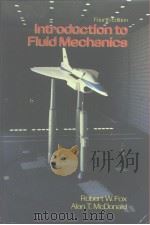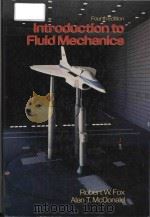《INTRODUCTION TO FLUID MECHANICS SIXTH EDITION》
| 作者 | 编者 |
|---|---|
| 出版 | 未查询到或未知 |
| 参考页数 | 789 |
| 出版时间 | 没有确切时间的资料 目录预览 |
| ISBN号 | 0471202312 — 求助条款 |
| PDF编号 | 812307408(仅供预览,未存储实际文件) |
| 求助格式 | 扫描PDF(若分多册发行,每次仅能受理1册) |

CHAPTER 1 INTRODUCTION1
1-1 Note to Students1
1-2 Definition of a Fluid3
1-3 Scope of Fluid Mechanics4
1-4 Basic Equations4
1-5 Methods of Analysis5
System and Control Volume5
Differential versus Integral Approach8
Methods of Description8
1-6 Dimensions and Units10
Systems of Dimensions11
Systems of Units11
Preferred Systems of Units13
1-7 Summary13
Problems13
CHAPTER 2 FUNDAMENTAL CONCEPTS17
2-1 Fluid as a Continuum17
2-2 Velocity Field19
One-, Two-, and Three- Dimensional Flows20
Timelines, Pathlines, Streaklines, and Streamlines21
2-3 Stress Field24
2-4 Viscosity26
Newtonian Fluid28
Non-Newtonian Fluids30
2-5 Surface Tension32
2-6 Description and Classification of Fluid Motion35
Viscous and Inviscid Flows35
Laminar and Turbulent Flows38
Compressible and Incompressible Flows39
Internal and External Flows40
2-7 Summary42
References42
Problems42
CHAPTER 3 FLUID STATICS52
3-1 The Basic Equation of Fluid Statics52
3-2 The Standard Atmosphere56
3-3 Pressure Variation in a Static Fluid57
Incompressible Liquids: Manometers57
Gases63
3-4 Hydraulic Systems66
3-5 Hydrostatic Force on Submerged Surfaces66
Hydrostatic Force on a Plane Submerged Surface66
Hydrostatic Force on a Curved Submerged Surface74
3.6 Buoyancy and Stability78
3-8 Summary82
References82
Problems83
CHAPTER 4 BASIC EQUATIONS IN INTEGRAL FORM FOR A CONTROL VOLUME99
4-1 Basic Laws for a System99
Conservation of Mass99
Newton's Second Law100
The Angular-Momentum Principle100
The First Law of Thermodynamics100
The Second Law of Thermodynamics101
4-2 Relation of System Derivatives to the Control Volume Formulation101
Derivation102
Physical Interpretation104
4-3 Conservation of Mass105
Special Cases106
4-4 Momentum Equation for Inertial Control Volume112
Differential Control Volume Analysis124
Control Volume Moving with Constant Velocity129
4-5 Momentum Equation for Control Volume with Rectilinear Acceleration131
4-7 The Angular-Momentum Principle139
Equation for Fixed Control Volume139
4-8 The First Law of Thermodynamics144
Rate of Work Done by a Control Volume144
Control Volume Equation146
4-9 The Second Law of Thermodynamics151
4-10 Summary152
Problems152
CHAPTER 5 INTRODUCTION TO DIFFERENTIAL ANALYSIS OF FLUID MOTION184
5-1 Conservation of Mass184
Rectangular Coordinate System184
Cylindrical Coordinate System189
5-2 Stream Function for Two-Dimensional Incompressible Flow193
5-3 Motion of a Fluid Particle (Kinematics)197
Fluid Translation: Acceleration of a Fluid Particle in a Velocity Field197
Fluid Rotation203
Fluid Deformation207
5-4 Momentum Equation211
Forces Acting on a Fluid Particle212
Differential Momentum Equation213
Newtonian Fluid: Navier-Stokes Equations213
5-5 Summary222
References223
Problems223
CHAPTER 6 INCOMPRESSIBLE INVISCID FLOW232
6-1 Momentum Equation for Frictionless Flow: Euler's Equation232
6-2 Euler's Equations in Streamline Coordinates233
6-3 Bernoulli Equation-Integration of Euler's Equation along a Streamline for Steady Flow237
Derivation Using Streamline Coordinates237
Derivation Using Rectangular Coordinates238
Static, Stagnation, and Dynamic Pressures239
Applications243
Cautions on Use of the Bernoulli Equation248
6-4 The Bernoulli Equation Interpreted as an Energy Equation249
6-5 Energy Grade Line and Hydraulic Grade Line254
6-8 Summary256
References257
Problems257
CHAPTER 7 DIMENSIONAL ANALYSIS AND SIMILITUDE273
7-1 Nondimensionalizing the Basic Differential Equations273
7-2 Nature of Dimensional Analysis275
7-3 Buckingham Pi Theorem277
7-4 Determining the Pi Groups278
7-5 Significant Dimensionless Groups in Fluid Mechanics284
7-6 Flow Similarity and Model Studies286
Incomplete Similarity289
Scaling with Multiple Dependent Parameters295
Comments on Model Testing298
Summary299
References300
Problems301
CHAPTER 8 INTERNAL INCOMPRESSIBLE VISCOUS FLOW310
8-1 Introduction310
PART A. FULLY DEVELOPED LAMINAR FLOW312
8-2 Fully Developed Laminar Flow between Infinite Parallel Plates312
Both Plates Stationary312
Upper Plate Moving with Constant Speed, U318
8-3 Fully Developed Laminar Flow in a Pipe324
PART B. FLOW IN PIPES AND DUCTS328
8-4 Shear Stress Distribution in Fully Developed Pipe Flow329
8-5 Turbulent Velocity Profiles in Fully Developed Pipe Flow330
8-6 Energy Considerations in Pipe Flow334
Kinetic Energy coefficient335
Head Loss335
8-7 Calculation of Head Loss336
Major Loss: Friction Factor336
Minor Losses341
Pumps, Fans, and Blowers in Fluid Systems347
Noncircular Ducts348
8-8 Solution of Pipe Flow Problems349
Single-Path Systems350
Multiple-Path Systems364
PART C. FLOW MEASUREMENT369
8-9 Direct Methods369
8-10 Restriction Flow Meters for Internal Flows370
The Orifice Plate373
The Flow Nozzle374
The Venturi376
The Laminar Flow Element376
8-11 Linear flow Meters380
8-12 Traversing Methods382
8-13 Summary383
References383
Problems385
CHAPTER 9 EXTERNAL INCOMPRESSIBLE VISCOUS FLOW409
PART A. BOUNDARY LAYERS410
9-1 The Boundary-Layer Concept410
9-2 Boundary-Layer Thicknesses412
9-4 Momentum Integral Equation415
9-5 Use of the Momentum Integral Equation for Flow with Zero Pressure Gradient421
Laminar Flow422
Turbulent Flow426
9-6 Pressure Gradients in Boundary-Layer Flow430
PART B. FLUID FLOW ABOUT IMMERSED BODIES433
9-7 Drag433
Flow over a Flat Plate Parallel to the Flow: Friction Drag434
Flow over a Flat Plate Normal to the Flow: Pressure Drag437
Flow over a Sphere and Cylinder: Friction and Pressure Drag438
Streamlining445
9-8 Lift447
9-9 Summary464
CHAPTER 10 FLUID MACHINERY487
10-1 Introduction and Classification of Fluid Machines487
Machines for Doing Work on a Fluid488
Machines for Extracting Work (Power) from a Fluid489
10-2 Scope of Coverage490
10-3 Turbomachinery Analysis491
The Angular-Momentum Principle491
Euler Turbomachine Equation491
Velocity Diagrams493
Hydraulic Power501
10-4 Performance Characteristics502
Performance Parameters503
Dimensional Analysis and Specific Speed514
Similarity Rules519
Cavitation and Net Positive Suction Head524
10-5 Applications to Fluid Systems528
Machines for Doing Work on a Fluid529
Machines for Extracting Work (Power) from a Fluid561
10-6 Summary571
References572
Problems574
CHAPTER 11 INTRODUCTION TO COMPRESSIBLE FLOW589
11-1 Review of Thermodynamics589
11-2 Propagation of Sound Waves596
Speed of Sound596
Types of Flow - The Mach Cone600
11-3 Reference State: Local Isentropic Stagnation Properties602
Local Isentopic Stagnation Properties for the Flow of an Ideal Gas603
11-4 Critical Conditions610
11-5 Summary611
References611
Problems611
CHAPTER 12 COMPRESSIBLE FLOW617
12-1 Basic Equations for One-Dimensional Compressible Flow617
12-2 Isentropic Flow of an Ideal Gas - Area Variation621
Subsonic Flow, M < 1623
Supersonic Flow, M > 1623
Sonic Flow, M = 1624
Reference Stagnation and Critical Conditions for Isentropic Flow of an Ideal Gas625
Isentropic Flow in a Converging Nozzle631
Isentropic Flow in a Converging-Diverging Nozzle637
12-3 Flow in a Constant-Area Duct with Friction643
Basic Equations for Adiabatic Flow644
Adiabatic Flow: The Fanno Line645
Fanno-Line Flow Functions for One-Dimensional Flow of an Ideal Gas649
12-4 Frictionless Flow in a Constant-Area Duct with Heat Exchange657
Basic Equations for Flow with Heat Exchange658
The Rayleigh Line659
Rayleigh-Line Flow Functions for One-Dimensional Flow of an Ideal Gas664
12-5 Normal Shocks669
Basic Equations for a Normal Shock670
Normal Shock Flow Functions for One-Dimensional Flow of an Ideal Gas672
12-6 Supersonic Channel Flow with Shocks678
Flow in a Converging-Diverging Nozzle678
12-7 Oblique Shocks and Expansion Waves680
Oblique Shocks680
Isentropic Expansion Waves690
12-8 Summary699
References699
Problems700
APPENDIX A FLUID PROPERTY DATA716
APPENDIX B EQUATIONS OF MOTION IN CYLINDRICAL COORDINATES730
APPENDIX C VIDEOS FOR FLUID MECHANICS731
APPENDIX D SELECTED PERFORMANCE CURVES FOR PUMPS AND FANS733
APPENDIX E FLOW FUNCTIONS FOR COMPUTATION OF COMPRESSIBLE FLOW744
APPENDIX F ANALYSIS OF EXPERIMENTAL UNCERTAINTY755
APPENDIX G SI UNITS, PREFIXES, AND CONVERSION FACTORS762
Answers to Selected Problems765
Index779
《INTRODUCTION TO FLUID MECHANICS SIXTH EDITION》由于是年代较久的资料都绝版了,几乎不可能购买到实物。如果大家为了学习确实需要,可向博主求助其电子版PDF文件。对合法合规的求助,我会当即受理并将下载地址发送给你。
高度相关资料
-

- INTRODUCTION TO SOCIOLOGY SIXTH EDITION
- 1999 THE HARCOURT PRESS
-
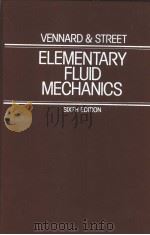
- ELEMENTARY FLUID MECHANICS SIXTH EDITION
- JOHN WILEY & SONS
-

- INTRODUCTION TO FLUID MECHANICS
- 1983 DROOKS/COLE ENGINEERING DIVISION
-
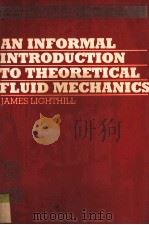
- AN INFORMAL INTRODUCTION TO THEORETICAL FLUID MECHANICS
- 1986 CLARENDON PRESS
-
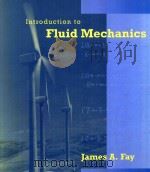
- INTRODUCTION TO FLUID MECHANICS
- 1994 MIT PRESS
-
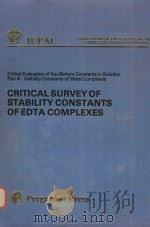
- CRITICAL SURVEY OF STABILITY CONSTANTS OF EDTA COMPLEXES
- 1977 PERGAMON PRESS
-
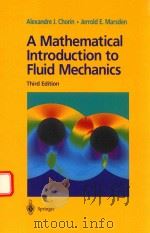
- A MATHEMATICAL INTRODUCTION TO FLUID MECHANICS
- 1993 SPRINGER
-
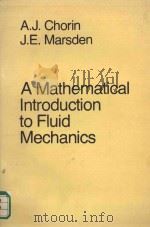
- A MATHEMATICAL INTRODUCTION TO FLUID MECHANICS
- 1979 SPRINGER-VERLAG
-

- INTRODUCTION TO CRIMINAL JUSTICE SIXTH EDITION
- 1993 WEST PUBLISHING COMPANY
-
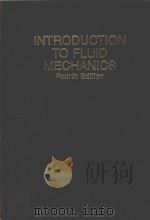
- INTRODUCTION TO FLUID MECHANICS FOURTH EDITION
- 1973 JOHN WILEY&SONS,INC.NEW YORK·CHICHESTER·BRISBANE·TORONTO·SINGAPPRE
-
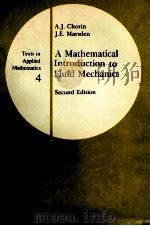
- A MATHEMATICAL INTRODUCTION TO FLUID MECHANICS SECOND EDITION
- 1990 SPRINGER-VERLAG;WORLD PUBLISHING CORP
-

- INTRODUCTION TO FLUID MECHANICS SECOND EDITION
- 1978 JOHN WILEY & SONS
提示:百度云已更名为百度网盘(百度盘),天翼云盘、微盘下载地址……暂未提供。➥ PDF文字可复制化或转WORD

